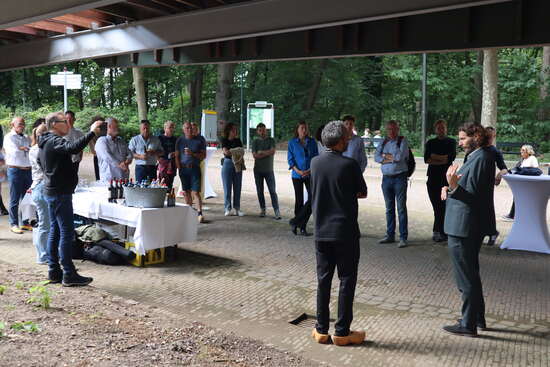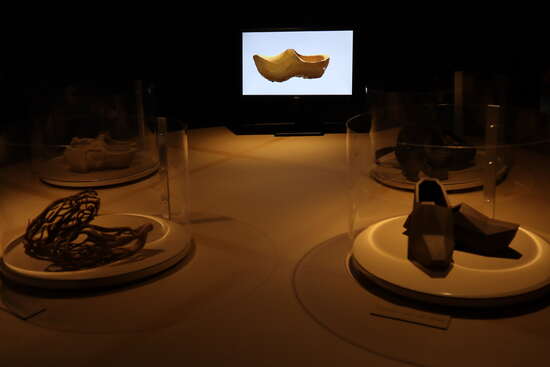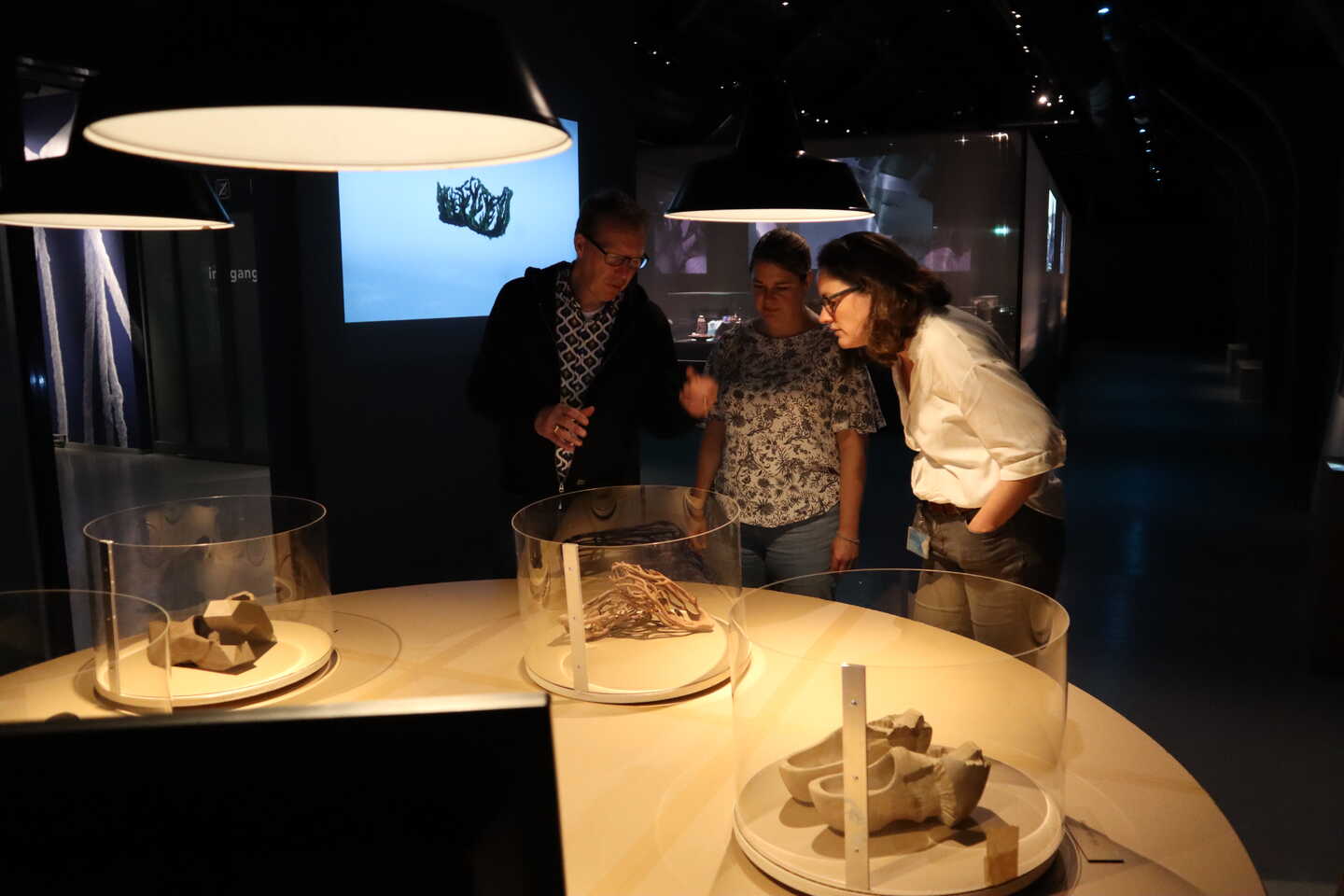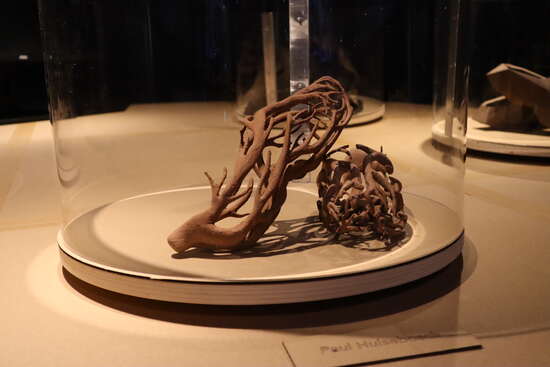While the guests gather under the canopy of the Wagenhal in the Dutch Open Air Museum, a familiar sound (to some) is heard. The sound of clogs on clinkers. There is no better time to wear wooden footwear: the presentation of the Craft Lab Clog Making part 2 is about to start. After a few short speeches, those present can look around the exhibition in the Wagenhal. The results of the Craft Lab are displayed there or run on screens. In this Lab, experiments were carried out with the clog by bringing it into the digital world .
Marco van Baalen en Frank Hemeltjen introduceren het AmbachtenLab Klompen maken. 
As the name suggests, this Craft Lab was a sequel to Clog Making part 1, where designers Marijke Bruggink and Thomas van den Bliek came to the conclusion at the end of that Lab that the clog no longer evolves. The shape and material are fixed. From that idea, a new path was taken. What would be the possibilities of a digital clog?
Iris de Vries , designer and participant in the Lab, says that she became intrigued by the clog, because this shape is now also often seen in the fashion world. In addition, you see that a lot of digital fashion is being created. There are brands that only make digital shoes. That is an interesting development, because you cannot wear those shoes in real life. This is where the idea of also digitizing the clog comes from. By scanning a clog , editing and animating it and then having it printed by the 3D printer, you play with ideas about the interaction between the digital and the 'offline' world.
Online en offline klompen 
Although no clog makers participated in the Lab part 2, a number of them were present at the presentation. Entrepreneur Jack van der Voort indicates that he finds the developed clogs interesting, but wonders whether they contribute to keeping the clog commercially interesting. In his view, this side of the craft of clog making is sometimes forgotten and he sees more opportunities to use the clog as a tourist product.
It is clear that making clogs still raises questions in 2022. Are clogs durable shoes? How do you market the clog so that the craft of clog making remains interesting? And to what extent will we continue to see the clog in the digital world? Questions to which, according to the participants, more Labs could be devoted.
Designers Marijke Bruggink, Thomas van den Bliek, Paul Hulsenbosch and Iris de Vries participated in this Craft Lab . Students Luuk Span, Fenna van Eldijk , Leanne Posthuma and Nina Sy participated from the ROC Rijn IJssel .
The next CraftLabs scheduled for the fall are Blueprints and Wool of Sheepherds . Keep an eye on our website for more information.

